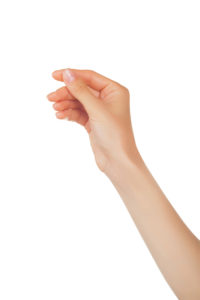 De Quervain’s Tendinosis is a repetitive injury that occurs when the tendons around the thumb become constricted, inflamed or irritated. Tendinosis means swelling of the tendons and any swelling that occurs around the base of the thumb can limit your ability to hold, grasp, and grip things comfortably.
De Quervain’s Tendinosis is a repetitive injury that occurs when the tendons around the thumb become constricted, inflamed or irritated. Tendinosis means swelling of the tendons and any swelling that occurs around the base of the thumb can limit your ability to hold, grasp, and grip things comfortably.
What is De Quervain’s Tendinosis?
The thumb is surrounded by two main tendons that attach the muscle to the bone. If the tendons become swollen or there is thickening of the sheath covering the tendons, you may experience significant pain when moving the thumb and wrist.
The most common cause of this condition is overuse, pregnancy, and rheumatoid arthritis. It is most common among women who have reached middle age but can develop in both men and women. Some of the most common symptoms of this condition include pain on the thumb side of the wrist, swelling over the thumb, a snapping sensation when moving the thumb, and swelling that limits movement of the thumb or wrist.
Dr. Kilaru will need to perform a complete evaluation to determine whether you have De Quervain’s tendinosis or another hand or wrist condition. He will ask you to perform a series of exercises that involve bending the thumb and wrist to see if you can perform them without pain.
Treatment for De Quervain’s Tendinosis
Treatment for De Quervain’s tendinosis may not require surgery. Nonsurgical treatment options include wearing a splint so the thumb and wrist stay in a rested position; taking anti-inflammatory medications; avoiding activities that might cause pain or swelling; or getting corticosteroid injections to reduce swelling and pain.
If symptoms do not improve with nonsurgical treatment, surgery may be recommended. The goal of surgery is open the thumb compartment to make space for tendons. Less friction of the tendons as you move your thumb and wrist can reduce irritation. Once you have recovered from surgery, seeing a hand therapist can help to restore strength and range of motion.
What to Expect with Treatment for De Quervain’s Tendinosis
Many patients respond well to nonsurgical treatments and get full relief from symptoms. Others need to undergo surgery and wait a few months for symptoms to dissipate. Results vary from patient to patient but Dr. Kilaru will monitor your progress and make recommendations for further treatment as needed.
If you think you might have De Quervain’s tendinosis or want to learn more about repetitive injuries, schedule a consultation with Dr. Kilaru today.






